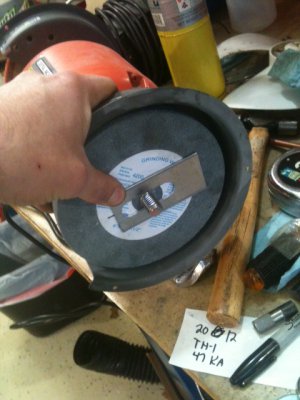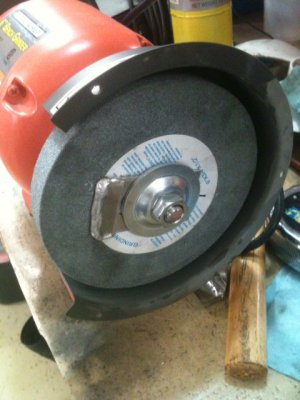- Joined
- Nov 16, 2012
- Messages
- 5,596
Here's one you'll either like or hate...
One of my grinders died and I picked-up a HF grinder for 39 bucks. Not half bad but, one wheel was way out of balance.
Took a piece of aluminum out of the drops bucket, cut a slot and welded some weight on the end. First I found/marked the heavy end then, added the weight. Globbed a little extra bead to make it heavier and ground down the edges. How did I calculate the weight? -Took a WAG! Of course, when using the side of the wheel, I'll have be a little more careful -but I can live with that.
Had to test and adjust the radial position a couple times but, it's smooth as silk now. And yes... the buffer pad is missing in the photo but it's installed now.
BTW: It really helps to balance the bench grinder wheels. Makes the bearings last a lot longer.
Ray



One of my grinders died and I picked-up a HF grinder for 39 bucks. Not half bad but, one wheel was way out of balance.
Took a piece of aluminum out of the drops bucket, cut a slot and welded some weight on the end. First I found/marked the heavy end then, added the weight. Globbed a little extra bead to make it heavier and ground down the edges. How did I calculate the weight? -Took a WAG! Of course, when using the side of the wheel, I'll have be a little more careful -but I can live with that.
Had to test and adjust the radial position a couple times but, it's smooth as silk now. And yes... the buffer pad is missing in the photo but it's installed now.
BTW: It really helps to balance the bench grinder wheels. Makes the bearings last a lot longer.
Ray






